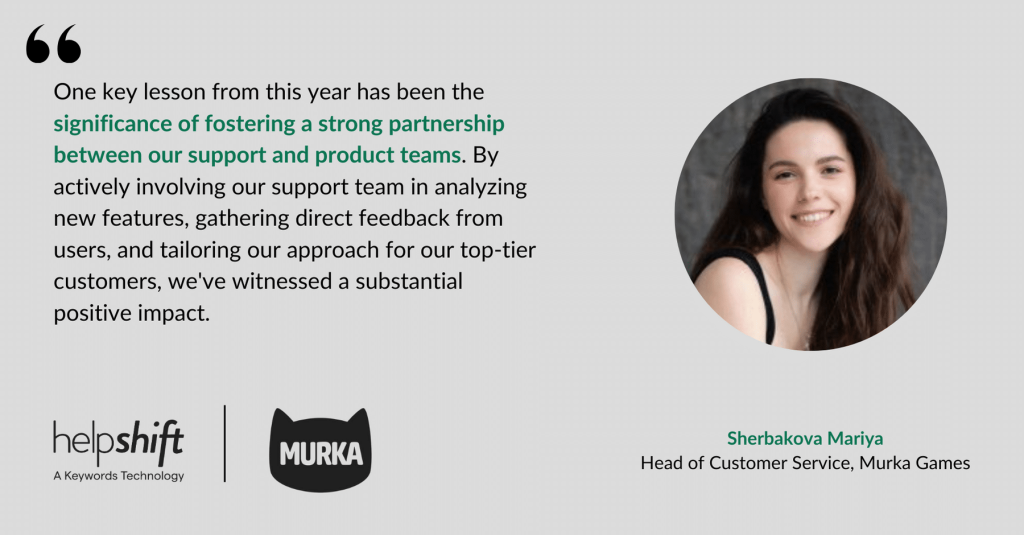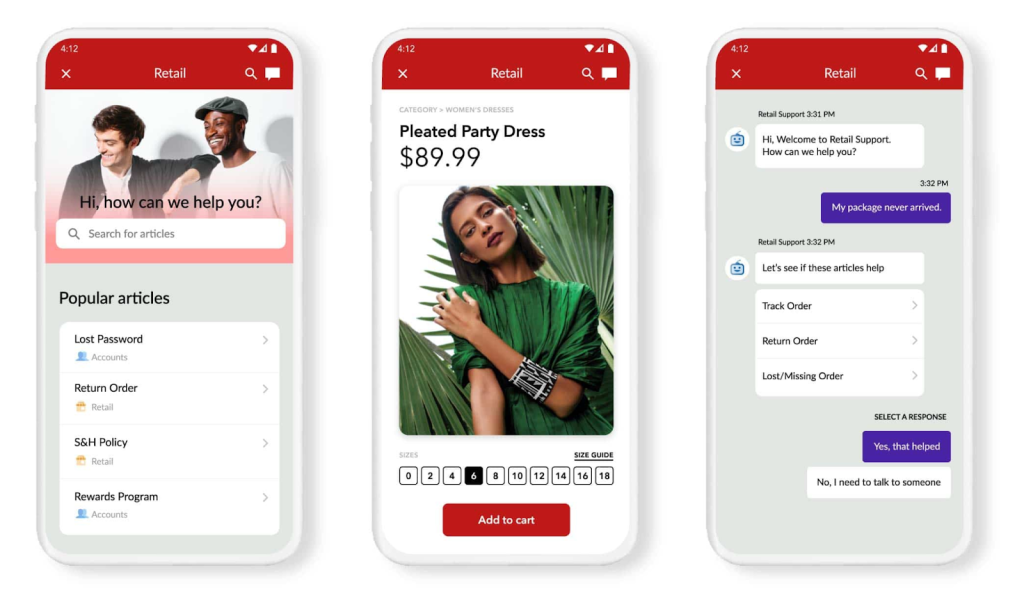The benefits of efficient customer service are significant, both in terms of revenue growth and cost savings. In research on actual customer transactions published in the Harvard Business Review, customers with the best experiences spent 140 percent more than those with the worst experiences. On the cost side, when companies use new technologies like AI and chatbots, they can dramatically increase efficiency by deflecting the majority of customer support tickets away from live agents and automating over 50 percent of customer support interactions.
To realize these gains in customer service efficiency and productivity, brands have begun to use modern customer service platforms that incorporate all the necessary technologies and tools – in particular, AI-driven bots and automation. The trend was recently called out by Forrester Research. According to Forrester’s recent Customer Service Megatrands analysis, automation and AI allow organizations to manage the ballooning volumes of interactions across an increasing number of channels without increasing agent headcount.
How can you realize efficient customer service with modern tools?
A modern customer service platform comes with significant capabilities and horsepower to run any sized customer service organization. To apply the technology correctly for optimized efficiency, you should focus on four key areas of customer service operations:
- Automations
- Self service
- Agent enablement
- Introduction of new channels
Let’s take a look at each.
Automations
Automations, driven by AI, have become table stakes in delivering customer service efficiency and productivity gains. It is compelling, because you can achieve so much via automation, even with a small customer support operation. Automations eliminate repetitive tasks and improve customer satisfaction by ensuring that customers are always directed to the best resource, whether that is knowledge base content, a chatbot or a live agent.
With a modern CS platform, building bots is simple and quick. Bot-building functions provide visuals for automating interactions in ways that follow the customer journey, and since no coding is required, anyone can build a bot that automates workflows for their specific use case. They can even test new automations instantly to ensure they did it right.
AI-powered issue classification labels issues and triggers automated routing to the right agent or bot, eliminating the need for manual steps, such as ongoing keyword-based tagging. To see how easily you can create your own automated workflows with bots, read our Beginner’s Worksheet for Building Customer Service Bots. Users with no previous experience building bots for in-app support have automated up to 70 percent of incoming issue management processes.
For a more comprehensive overview of intelligently automating customer service, visit our AI and automation page.
Self service
Today, most customers prefer to resolve their own issues using quick links to knowledge base content or having a quick discussion with a chatbot that can point them in the right direction. This is great news for efficiency goals, because you can simply load up your knowledge base with the wide variety of information you already have – articles, videos, etc. – and let your bots lead users on their way.
With knowledge bases available online and directly within apps, your organization gains always-on self-service, and management can pursue global and multichannel strategies, knowing that cost-efficient support is built right into them. Here’s a helpful overview to get you started with your own knowledge base or to optimize the one you already have. The results can come quickly and with high ROI. As an example, read how Zynga uses self-service and automation technology to support more than 88 million monthly users with a nearly 200 percent increase in agent productivity.
Agent enablement
Your customer service agents are most productive when the information they need is made available to them at the specific moment they need it. You can leverage the unified dashboard of a modern CS platform to give agents a single view for managing their tickets. At a minimum, a dashboard should provide agents with fast access to each ticket’s data, channel context and interaction history.
Once you gain comfort with dashboard basics, you can jump to using AI and bots to present agents with far more context, such as the purchase history of the customer, their value to your organization and even hints for up-selling the individual upon resolving their issue.
From a pure efficiency standpoint, better dashboards and context reduce the volume of agent-sent messages and live discussions, meaning you can manage more issues without adding agent resources.
Introduction of new channels
We’re living in a multichannel world, and modern customers quickly become disillusioned if customer service is not strong in their preferred channels. When using a modern CS platform, you can easily introduce new support channels that align with customers’ channel preferences. In-app knowledge bases and in-app messaging let mobile app users get the help they need without ever moving to another channel. Even if they do, the metadata collected within your SDK gives your bots and agents the context they need to resolve issues at maximum speed and efficiency.
Whether your customers need support in your app, website, phone or even third-party channels like Apple Business Chat or Google’s Rich Communications Services, the bots and automations inherent in a modern CS platform allow you to combine support across all channels. The flexibility to serve so many digital channels simultaneously and in a unified way is a shift in how you can serve all customers efficiently. To delve into the wide range of possibilities, check out our Digital Channels page.
Conclusion: Tracking your efficiency gains
After implementing the above tools, the fun part of using a modern CS platform becomes discovering just how much more efficient your CS operations have become through tracking and reporting on key metrics. A modern analytics dashboard provides the right metrics and views to see how you have improved customer service efficiency. For example, you can set time parameters to view open issue volume based on your specific channel, app, platform or language.
Other popular metrics Helpshift customers measure on an ongoing basis include the following:
- Types of users helped (Paying, non-paying, VIP, etc.)
- Types of issues submitted (Feedback, bugs, etc.)
- The volume used of each support tool (Help, FAQ, videos, etc.)
To improve customer service efficiency in the best way possible, you will want to combine metric measures. For instance, if your ‘Reported Issues’ are measured to total just 10% of ‘Initiated Help’, then you can celebrate that you have deflected 90 percent of potential support issues via your knowledge base content.
In the end, you can visualize so much – the effectiveness of your customer service responses, knowledge base content pieces, individual agents and more. Having this capability will enable continuous improvement to your customer service efficiency and productivity.
Want to learn more?
- Blog Post: How Self-Service Automation Elevates the Customer Experience
- Additional Product Information: Helpshift’s Intelligent Customer Self-Service




